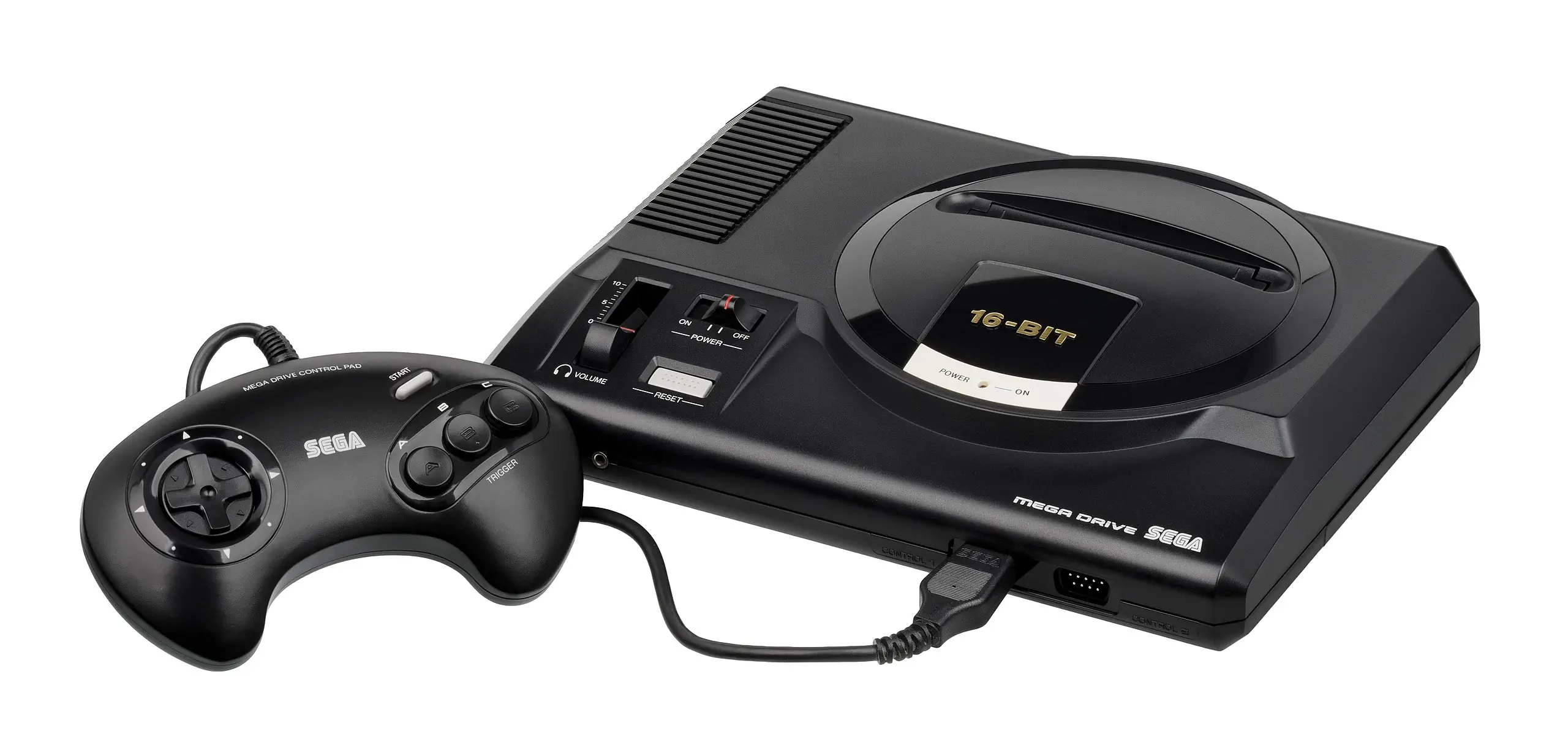
Sega Mega Drive (EU Version)
The Sega Mega Drive was distributed by Virgin Mastertronic for Europe. The Mega Drive, or the Genesis as it is known in North America, is a 16-bit fourth generation home video game console developed by Sega. The Genesis is the successor to the Sega Master System. The console was released in 1988 in Japan as the Mega Drive and in 1989 in the US and Canada as the Sega Genesis.
The Genesis runs on a 16/32-bit Motorola 68000 CPU running at 7.6MHz. There is a second CPU, a Zilog Z80 that controls the sound hardware but also provides backward compatibility with the Sega Master System. The Gennesis has 64kByte RAM, 64kByte VRAM and 8kB Audio RAM. The Display chip can produce 61 color simultanuously out of a palette of 512 colors.
The Genesis became popular in North America when the included game of Altered Beast was changed out for Sonic the Hedgehog. The game Altered Beast was considered by some conservative groups as inappropriate. With Sonic, the Sega Genesis became a true competitor for the Nintendo Entertainment System.
The Video Display Processor is capable of the following video modes and scroll planes:
Screen Resolution
NTSC
- H40 mode - 320x224px (40x28 8x8 tiles)
- H32 mode - 256x224px (32x28 8x8 tiles)
PAL
- H40 mode - 320x240px (40x30 8x8 tiles)
- H32 mode - 256x240px (32x30 8x8 tiles)
Graphics Planes
2 scroll planes
- Plane B - Background Plane
- Displays tile graphcis via tile maps
- Plane A - Foreground Plane
- Displays tile graphcis via tile maps
- Window subplane - subplane for plane A, with tile graphics that does not scroll with the rest of the plane
- Each row of tiles is rendered column-by-column
- Tiles on each plane can have priority low or high
- Draws sprite tile graphics
- Internally, sprites are rendered in reverse order; i.e., each column of tiles is rendered by rows.
- Sprites are positioned in a virtual 512x512 grid with 128x128 the top left corner of the display
- Genesis can display up to 80 hardware sprites simultaneously
- 20 sprites can be rendered on the same scanline before flicker
- Sprite sizes can be 1-4 tiles big (each tile is 8x8), combining them can make larger sprites
- Sprites can have high or low priority. Low priority sprites are displayed behind high priority tiles in other layers.
1 Sprite Plane
Texas Instruments SN76489 Sound Generator
THe SN76489 Digital Complex Sound Generator (DCSG) is a TTL compatible programmable sound generator chip created by Texas Instruments. It main application was the generation of music and sound effects in home computers, arcade machines and home game consoles. Functionally the chip was similar to the General Instrument AY-3-8910.
SOund Capabilities:
- 3 Square Wave tone generators, 16 volume levels
- 1 White Noise Generator (white and periodic noice, 3 frequencies, 16 volumes)
The SN76489 Was originally designed to be used in the TI-99/4 computer, where it was first called the TMS9919 and later SN94624, and had a 500 kHz max clock input rate. Later, when it was sold outside of TI, it was renamed the SN76489, and a divide-by-8 was added to its clock input, increasing the max clock input rate to 4 MHz, to facilitate sharing a crystal for both NTSC colorburst and clocking the sound chip. A version of the chip without the divide-by-8 input was also sold outside of TI as the SN76494, which has a 500 kHz max clock input rate.
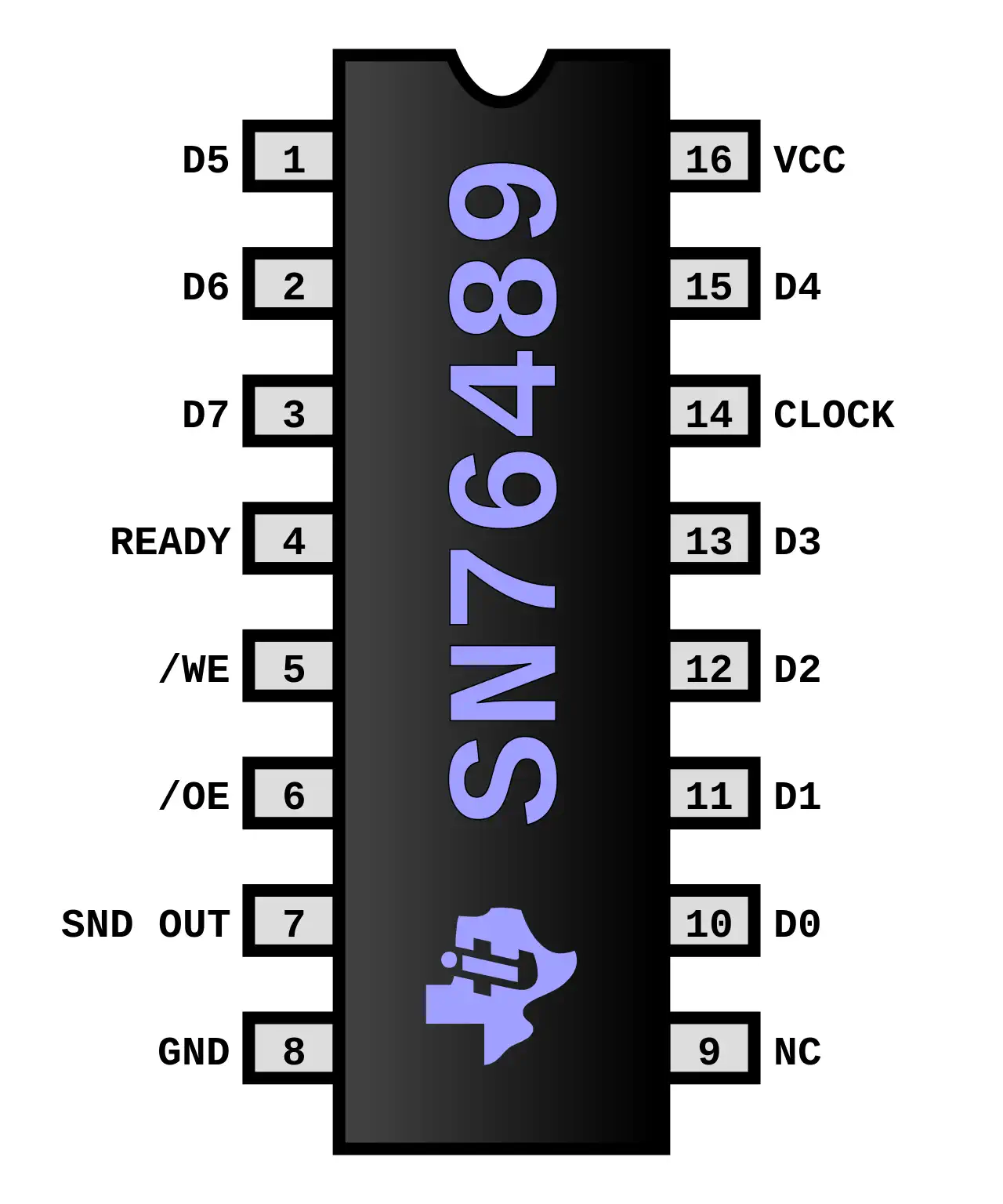
Motorola 68000 CPU Family
The Motorola 68000 is a 16/32-bit microprocessor that was first released in 1979. It was widely used in computers and other electronic devices during the 1980s and early 1990s. The 68000 was known for its advanced architecture, which included a 32-bit internal bus and a 24-bit address bus, allowing it to access up to 16 megabytes of memory. This made it more powerful than many other processors of its time, such as the Intel 8086 and Zilog Z80. It was also designed to be highly modular and expandable, with a large number of on-chip and off-chip peripherals.
Some of the most famous and successful computers that used the 68000 was the Commodore Amiga and the Atari ST, both of which were popular in the home and personal computer markets. Additionally, it was also used in workstations, such as the Sun 3 and Apollo DN3000, and in a wide variety of embedded systems and industrial control systems. The 68000 was also used in the Macintosh, the first model of the Macintosh was powered by a Motorola 68000 CPU. The processor was eventually succeeded by the 68020 and 68030, which offered improved performance and additional features.
The 68000 has a 32-bit instruction set, with 32-bit registers and a 16-bit internal data bus. The address bus is 24-bit and does not use memory segmentation, making it easier to address memory. There are three ALU's (Arithmetic Logic Unit), two for calculating addresses, and one for data, and the chip has a 16-bit external address bus.
The 68000 architecture was expanded with 32-bit ALUs, and caches. Here is a list with some 680x0 versions and their major improvements:
- 68010 - Virtual memory support
- 68020 - 32-bit ALU & Instruction Cache
- 68030 - On-Chip MMU, 2x 256 byte cache
- 68040 - 2x 4K Cache, 6 stage pipeline, FPU
- 68LC040 - No Floating Point Unit (FPU)
- 68060 - 2x 8K Cache, 10 stage pipelinet
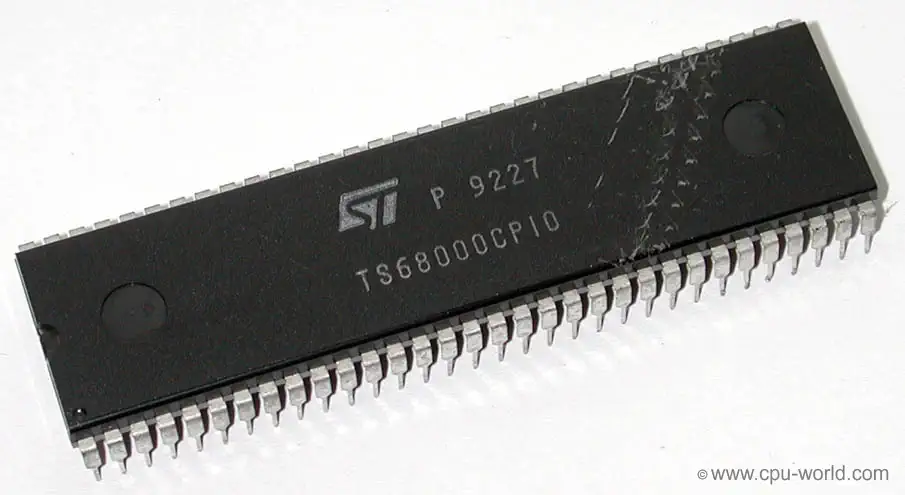
Source: WikiPedia - Motorola 6800
Source: WikiPedia - 68000 Series
Zilog Z80 CPU Family
The Z80 quickly became popular in the personal computer market, with many early personal computers, such as the TRS-80 and Sinclair ZX80, using the Z80 as their central processing unit (CPU). It was also widely used in home computers, such as the MSX range, SORD, and the Amstrad CPC, as well as in many arcade games. Additionally, it was also used in other applications such as industrial control systems, and embedded systems. The Z80 was widely used until the mid-1980s, when it was gradually replaced by newer microprocessors such as the Intel 80286 and the Motorola 68000.
The Z80 microprocessor was developed by Zilog, a company founded by Federico Faggin in 1974. The Z80 was released in July 1976, as a successor to the Intel 8080. It was designed to be fully compatible with the 8080, but also included new features such as an improved instruction set, more powerful interrupts, and a more sophisticated memory management system.
The Z80 quickly became popular in the personal computer market, with many early personal computers, such as the TRS-80 and Sinclair ZX80, using the Z80 as their central processing unit (CPU). It was also widely used in home computers, such as the MSX range, SORD, and the Amstrad CPC, as well as in many arcade games. Additionally, it was also used in other applications such as industrial control systems, and embedded systems. The Z80 was widely used until the mid-1980s, when it was gradually replaced by newer microprocessors such as the Intel 80286 and the Motorola 68000. The design was licensed to Synertek and Mostek as well as the European SGS.
The Z80s instruction set is binary compatible with the Intel 8080, so that 8080 code such as the CP/M Operating System and Intel's PL/M compiler for the 8080 can run unmodified on the Z80. The Z80 had many enhancements over the 8080 such as 16-bit data movement instructions, block copy and block I/O instructions, single bit addressing of all registers, IX/IY offset registers, better interrupt system and a complete duplicate register file for context switching during an interrupt.
Source: WikiPedia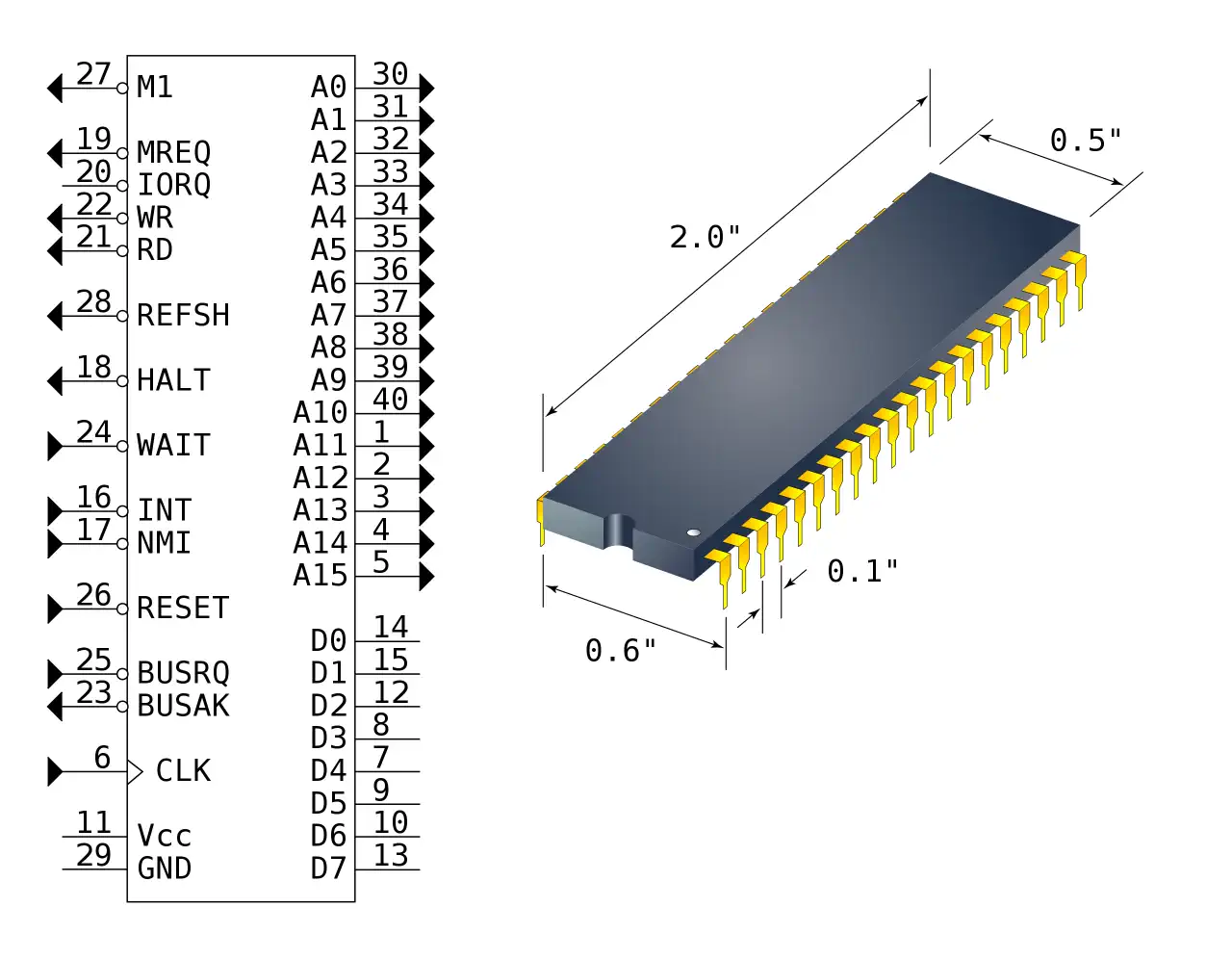
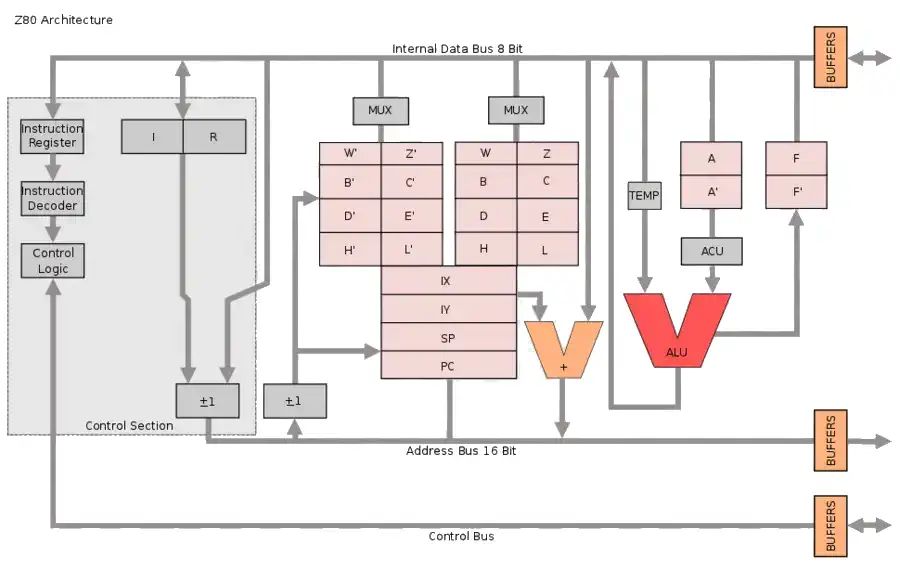
Z80 @3.58MHz Sound Chip Z80, Yamaha YM2612, Texas Instruments SN76489 Sound Stereo sound Display Chip YM7101 VDP (Combined with YM2612 as the ASIC FC1004) Display 320x240 in 61 colors out of 512 Best Color 61 colors out of 512 Best Graphics 320x480 (Interlaced) Sprites 80 hardware sprites simultanuously, 20 per scanline. Storage ROM Cartridges Original Price £189.99
